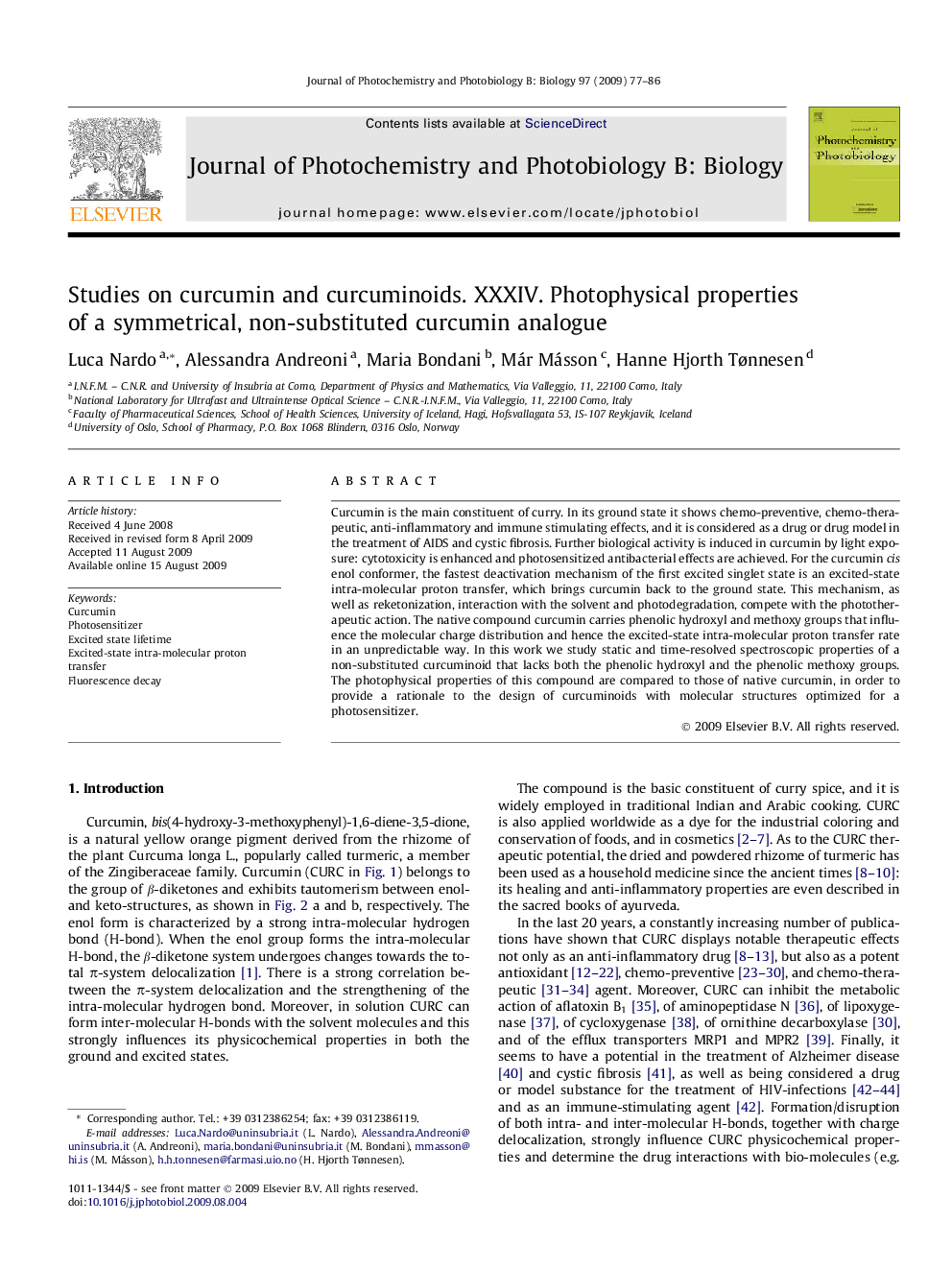| Article ID | Journal | Published Year | Pages | File Type |
|---|---|---|---|---|
| 31104 | Journal of Photochemistry and Photobiology B: Biology | 2009 | 10 Pages |
Curcumin is the main constituent of curry. In its ground state it shows chemo-preventive, chemo-therapeutic, anti-inflammatory and immune stimulating effects, and it is considered as a drug or drug model in the treatment of AIDS and cystic fibrosis. Further biological activity is induced in curcumin by light exposure: cytotoxicity is enhanced and photosensitized antibacterial effects are achieved. For the curcumin cis enol conformer, the fastest deactivation mechanism of the first excited singlet state is an excited-state intra-molecular proton transfer, which brings curcumin back to the ground state. This mechanism, as well as reketonization, interaction with the solvent and photodegradation, compete with the phototherapeutic action. The native compound curcumin carries phenolic hydroxyl and methoxy groups that influence the molecular charge distribution and hence the excited-state intra-molecular proton transfer rate in an unpredictable way. In this work we study static and time-resolved spectroscopic properties of a non-substituted curcuminoid that lacks both the phenolic hydroxyl and the phenolic methoxy groups. The photophysical properties of this compound are compared to those of native curcumin, in order to provide a rationale to the design of curcuminoids with molecular structures optimized for a photosensitizer.
